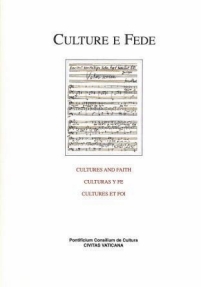Editorial
“Exasperating” was the description used by Tolstoy in his novella The Kreutzer Sonata to describe the effect of music, rather than the more spiritual “elevating the soul”, an experience with which many readers will be more nostalgically familiar. These two poles resonate with the results of our questionnaire on the state of Sacred Music, with Episcopal Conferences, Theological Faculties and Major Religious Institutes around the globe painting a picture of creativity, dedication, confusion, thirst for tradition and pertinence, plus not a few interpersonal, institutional and economic difficulties. Apart from the situation of liturgical musicianship, where there is a splendidly wild variety of flourishing initiatives and passionate commitment, the questionnaire investigated music more widely, looking at the grammar of sacred music and also the trends of contemporary music around the world. Diverse expectations unfold across the spectrum, not always harmonically.
This monographic edition of Cultures and Faith dissects some of the pastoral themes arising in music.
We open with a presentation of a scholarly project on the archives of Christian music from the colonial period, which sees collaboration between various institutions, including the Pontifical Institute of Sacred Music, and aims to uncover a treasure of historical material, correspondence and scores, making it available to future generations.
Musical tradition as a “treasure of inestimable value” is examined by the musical director of Liverpool Metropolitan Cathedral as he looks at the role of a choir in the liturgy and in the educational environment, particularly in light of the differing trends in the way the Second Vatican Council’s Sacrosanctum Concilium was received.
Musicologist Régis Duprat then gives an overview of the socio-cultural structures that have influenced the development of Sacred Music in Brazil, concentrating on the arduous engagement between composers and the user base, the ecclesial and musical groups and movements.
A specific case study of the Misa Criolla in the Latin American setting with its use of folk music idioms is the subject of an article by Leonardo Waisman, underlining the living nature of the sacred, which is able to transcend, even transfer between cultural processes.
Finally, in harmony with this Dicastery’s mission to promote an engagement between the Church and contemporary secular culture, an overview by pop music agent Anne Barrett illustrates some of the strategies employed by professionals in the industry.
Tolstoy’s bleak view of human nature in that passionate novella focused on sensuality, emotion and jealousy, yet at the end his lead character Pozdnyshev also expresses a timely desire for forgiveness. Beethoven’s Violin Sonata no. 9 (the “Kreutzer”) itself requires great technique, practice and understanding of both violinist and pianist if they wish to perform together his tempo in romantic rubato. But this sonata is also noted for another reason: it lasts twice as long as many of his others. This concern overlays our continuing reflection on the space given to music, not just in terms of human and ecclesial resources, but also in terms of time. Significant in this regard is Anne Barrett’s alert that pop radio managers do not forgive a piece that lasts longer than three minutes and twenty seconds!
Richard Rouse
 Vol. XXIII 2015 N.1
Vol. XXIII 2015 N.1



